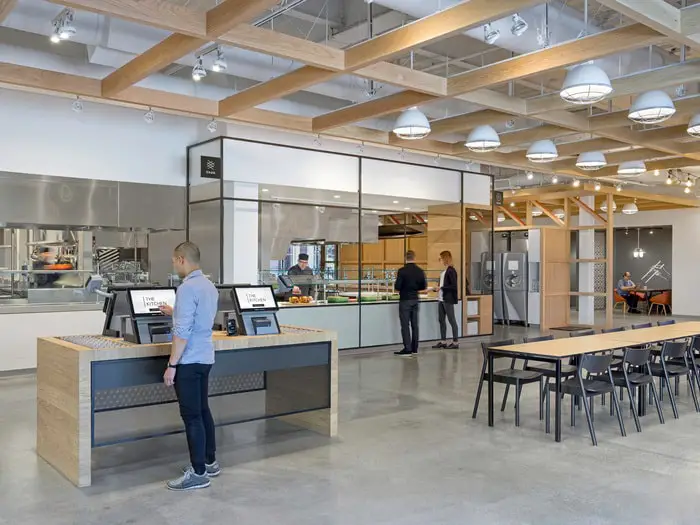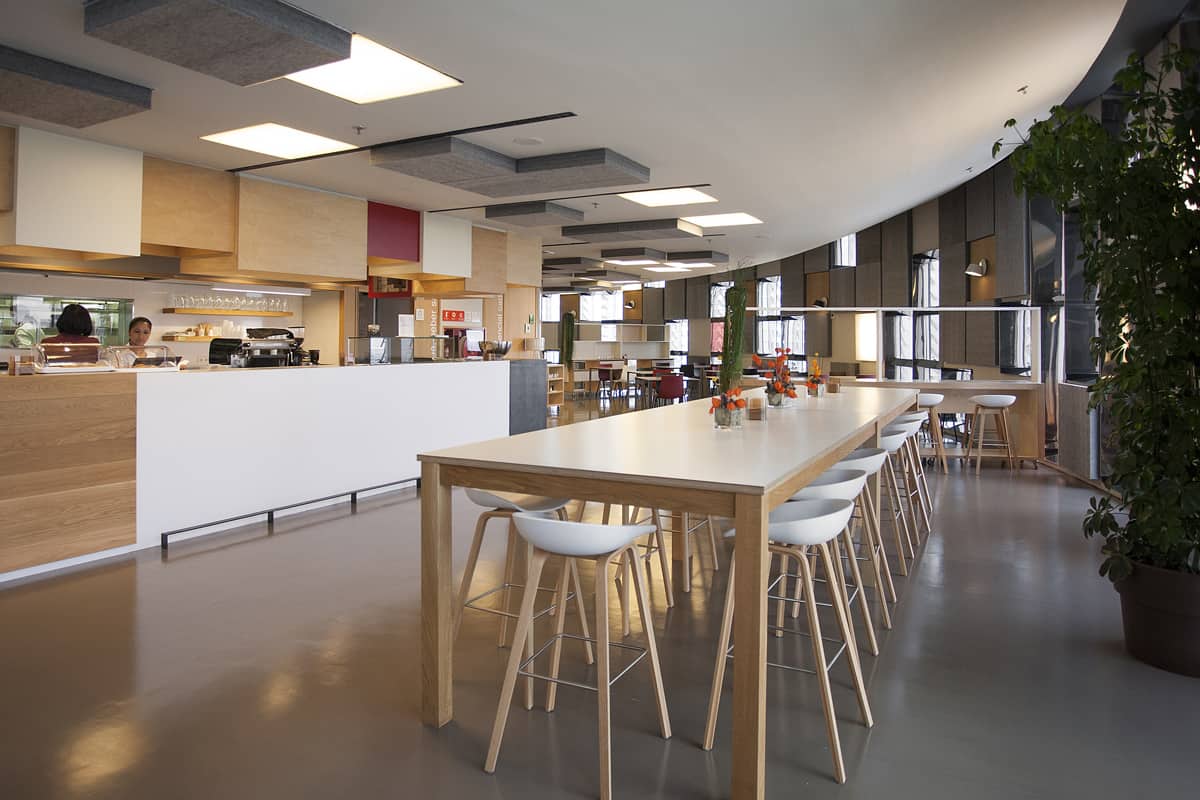For most of us, the workplace is like a second home, considering the amount of time we spend in the workplace. For this reason, every company needs to have a well-equipped pantry, although designing green and sustainable pantry can be quite challenging.
How do you design and operate a Green and Sustainable corporate employee pantry? Designing green and sustainable pantry means avoiding materials that contain toxic and dangerous elements and using sustainable materials that are providing environmental, ecological, and economic benefits while protecting and not harming the environment. Also, there should be less plastic and paper waste by using food containers that are made of glass or other reusable materials
Designing a sustainable pantry can be expensive, but a healthier office pantry is worth every penny. It is contributing to happier employees by offering them proper nutrition options. This way the employees won’t have to leave the office to buy lunch and lose precious time that can be otherwise spent on daily tasks and challenges. After all, nobody can be productive on an empty stomach.
How to Design and Build A Sustainable Corporate Pantry?
Style of The Office Pantry
When designing an office pantry, the most important thing is to be functional, with a great number of storage options, and easily accessible to all of the employees. The pantry’s design should be integrated with the overall office design.
There are numerous styles and designs of sustainable corporate pantries, from modern to classic. Make sure that your pantry has many drawers and shelves for storage, not only for food but also for different kitchen appliances, silverware, etc.
If you are going for a modern office with minimalist and clutter-free design, you can try to blend the pantry into the walls. You can build a large kitchen island as well. Building shelves and cupboards that blend in with the wall and the whole office design will create a look that won’t be a distraction, but an open and bright break area.
Another way of building a modern office pantry is by building the shelves on the wall and hiding them with accordion doors. Even though the pantry will take a large portion of the wall, with these doors the whole design of the pantry won’t be overwhelming but will give a minimalist and functional design. You can even build in a sink. The shelves can be from thermally modified wood or different sustainable material that will increase the pantry’s durability and will give a bit of a retro feel.
The ideal pantry and break area should be centrally located and open, which will enable the employees to mingle, spend some time together, share experiences and collaborate. Having a large kitchen area is great for a big company. The pantry shelves can be in the open without being covered by doors. This open display can be organized in a way that will contribute to the overall ultra-modern design of the office. The storage shelves can be built up to the ceiling. In addition, there can be dedicated space for microwave, oven, coffee machine or similar appliances. (We have written a related article – How to Design a Breakout Space that’s Right for Your Employees )
)
Building an Office Pantry
While designing a sustainable pantry and kitchen, try to avoid all of the materials that are containing dangerous elements, such as asbestos, mercury, chromium, lead, and more.
Sustainable materials are the materials that are providing environmental, ecological, and economic benefits while protecting and not harming the environment. Reclaimed timber, bamboo, linoleum, cork, and more, are examples of sustainable materials that can be used in the pantry.
If you want to use wood, whether for your floor or cabinets, there are numerous manufacturers that are reclaiming wood from old building floors, refinishing it and creating new floors. This way the wood doesn’t come from destructive tree cuts. Bamboo and Cork are sustainable wood products, since they are fast-growing trees, and their harvest is controlled sustainably with no damage to the environment.
There are countless building materials, and with the help of the certification provided by independent organizations, they can find the materials that meet the sustainability guidelines. For example, here are some of the needed certifications:
– GreenGuard is certifying the building materials for low chemical emissions, in order to improve the indoor air quality;
– Cradle to Cradle is focusing on materials that are designed for a long-life cycle, while being safe to the planet and people;
– The Forest Stewardship Council is ensuring that the wood materials are coming from forests that are responsibly and sustainably harvested.
What materials can be used for pantry cabinets?
Bamboo – as said before is one of the best environmental options. Bamboo reaches maturity in 5-7 years, so it is considered a rapidly renewable source. In the production of pantry/kitchen cabinets, bamboo’s veneers are cut with the use of ultra-thin slices of wood which results in maximum yield.
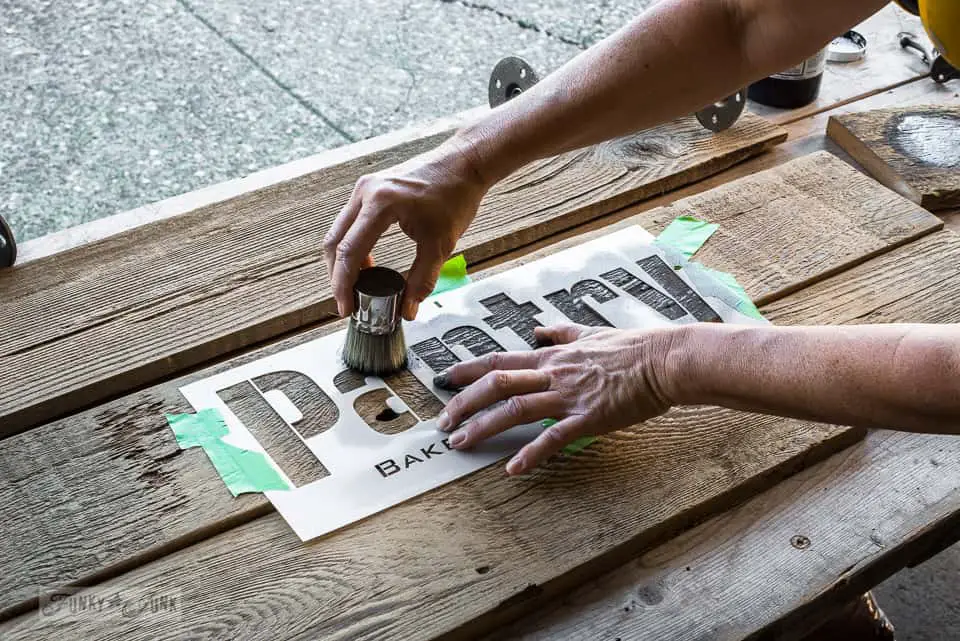
Salvaged Wood – Choosing a wood that has been salvaged from an old building will add a bit of personality to space, because of the wood’s history. However, wood can be damaged by heat and water, so it is better if it’s located away from the dishwasher and sink. It would be great for making shelves, cupboards, island, etc.
What materials can be used for kitchen countertops?
Countertops can come from certified, recycled or salvaged materials, and wood, resin or glass.
Butcher Block is composed out of smaller pieces of wood. Sustainable butcher block can be made from different sources but mainly it’s made of reclaimed shipping pallets, wood in deconstructed buildings, etc. This surface is great with knives. When the block shows some age, you can easily sand the wood and then refinish it with natural food oil.
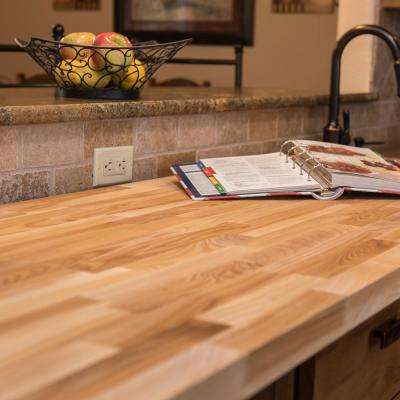
Bamboo it a lot harder and stronger than the other hardwoods. There are several manufacturers that are offering FSC-certified products. However, bear in mind that a large portion of the commercial bamboo comes from China, which means that a lot of energy is spent on transportation from China to the United States.
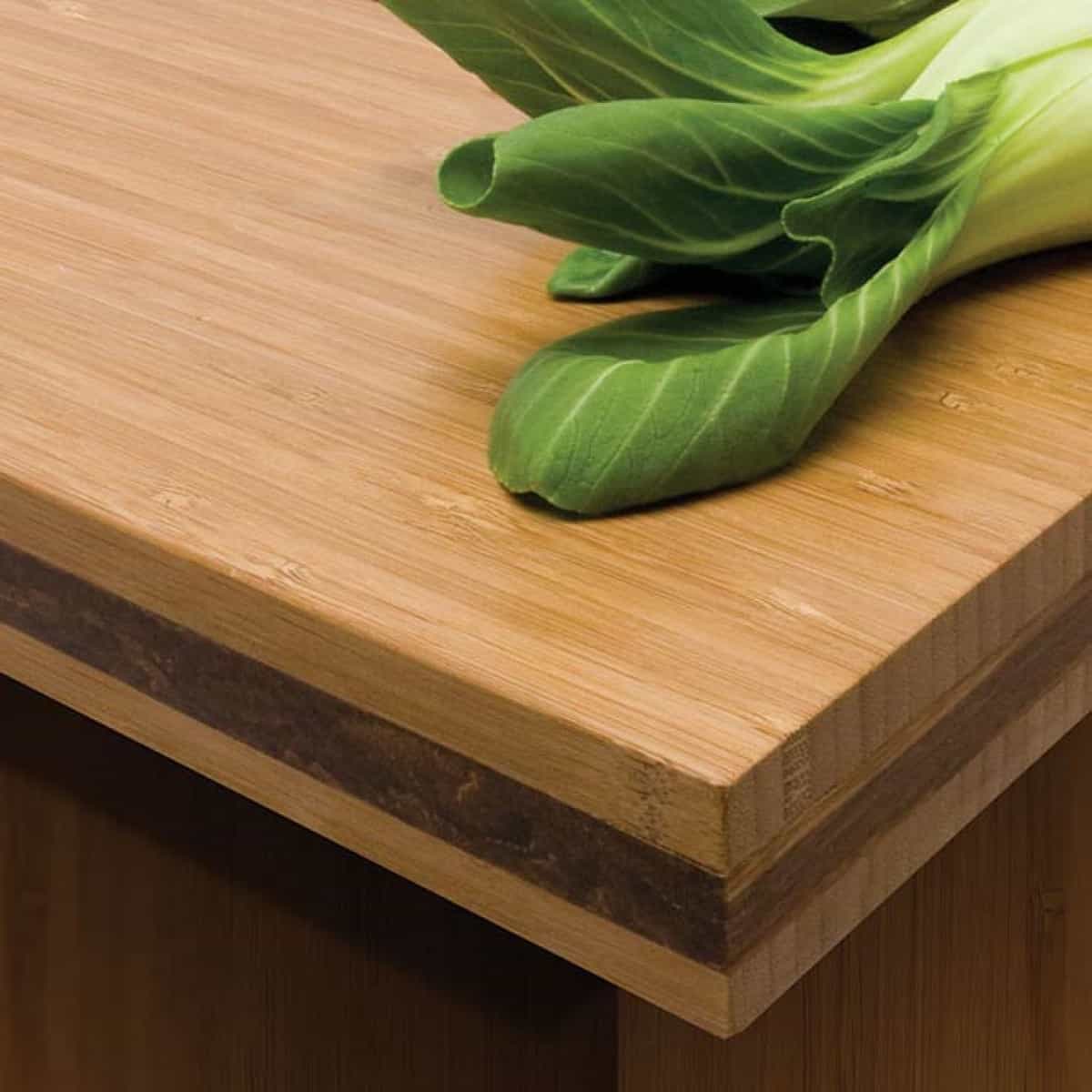
Recycled Paper – One of the recycled materials for countertops is paper stone. Paperstone is made out of 100% post-consumer recycled paper and resin that is petroleum-free. It is also FSC certified. Paperstone is heat resistant up to 350 degrees.
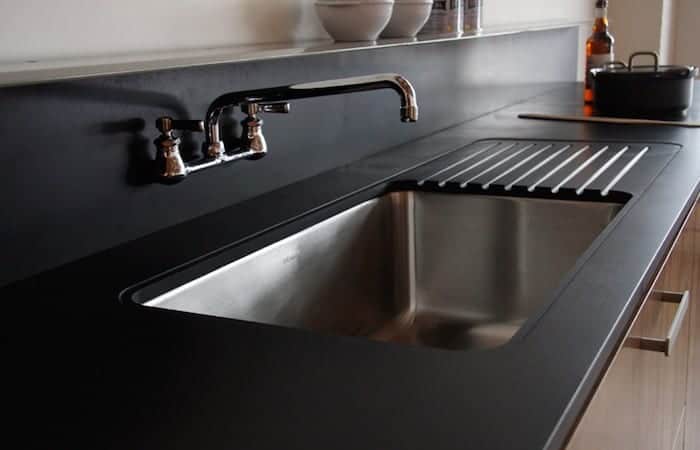
Squak Mountain replicates the characteristics of natural stone, but it’s actually a mix of waste (recycled) paper, glass, and cement. This material is lighter than the heavy stones, and it’s a lot easier to use, handle or install. Despite its composition, it’s very durable, but as any stone is susceptible to etching and staining.
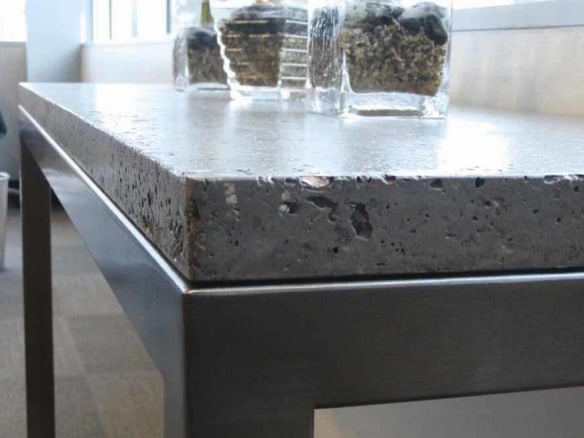
Icestone is made of recycled glass set in pigmented cement. It is Cradle to Cradle certified and it gives a certain opaque and refined character in its appearance. However, this material is porous, and it required maintaining it by sealing it a couple of times per year.
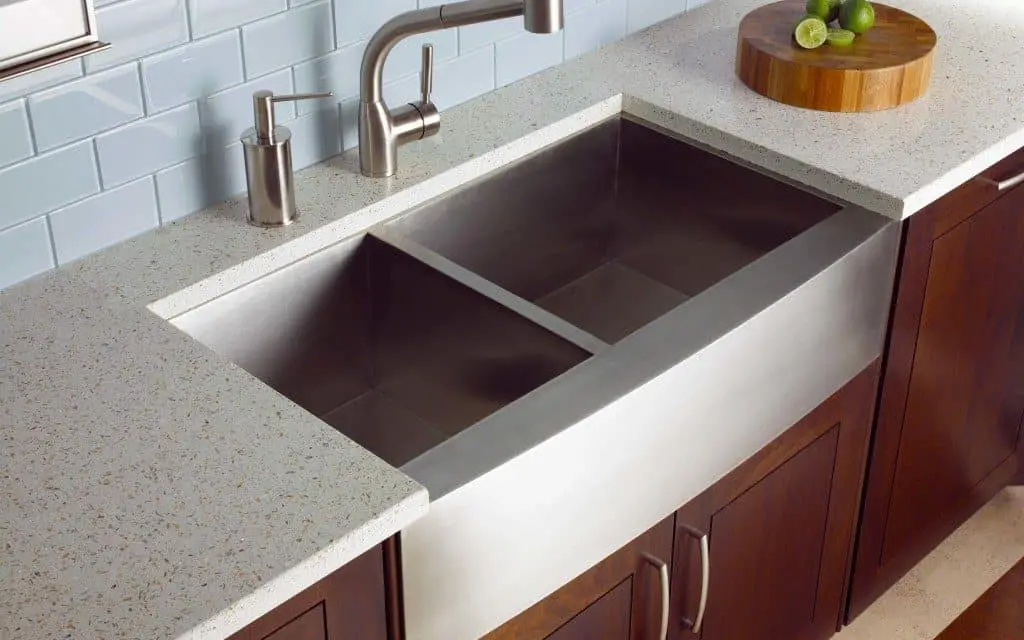
Bio-Glass is countertop made by 100% recycled glass and it has an ethereal and translucent appearance. Since it glass-based material, it is not very knife friendly, so make sure to have sustainable cutting boards at hand.
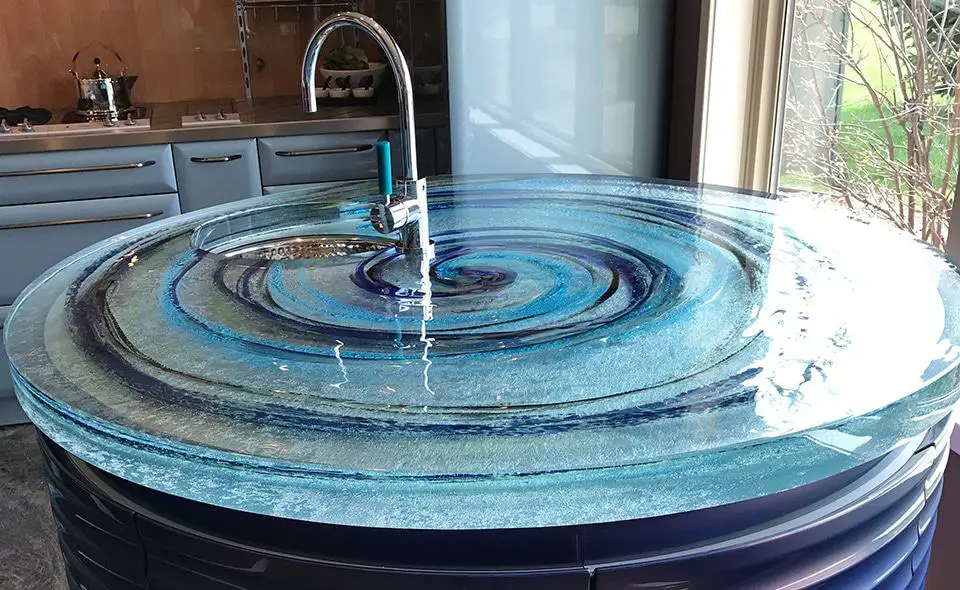
Stainless Steel is made out of 60% recycled materials and can be recycled over and over again. It has great durability and its use is even preferred in the commercial kitchens and their strict rules for cleanliness.

Concrete counters that are sourced locally and made out of low-impact aggregates, and recycled paper or glass can be a great green option.

What are the most sustainable options for the kitchen floor?
The durability of the kitchen floor is the most important key to having a sustainable kitchen. When the floor lasts longer, fewer resources are spent on maintaining or replacing. With today’s technology advancements, you can have a sustainable floor that doesn’t come at the expense of your office style.
Wood type floors
Wood might be the most sustainable choice or the worst choice, ecologically speaking. If it’s harvested sustainably it is perfect since it has a long-life cycle, and it’s durable. However, if it isn’t harvested in a responsible manner is has a quite destructive impact on the environment.
There are certain things that need to be taken into account if you choose wood floor as a sustainable option:
FSC Certification – FSC (Forest Stewardship Council) is a third-party certification agency that provides approval or certification that the wood was harvested sustainably
Local wood – Wood is sustainable if it’s local without being shipped or transported from long distances.
Rating of wood hardness – The Janka hardness rating ranges from 0-4000. The bigger the hardness rating, the better endurance in terms of wear-tear, normally if the hardwood is maintained properly. If you want to have a wood floor that will last for decades, its rating should be at least 1500.
Without being concerned about deforestation and yet have a hardwood floor, besides purchasing wood that is FSC certified, you can consider using reclaimed wood or salvaged wood.
Reclaimed wood floors
Reclaimed wood is a great option since it is reusing existing wood from trees that were chopped a long time ago. This option is using everything from barn lumber to warehouse pallets that were broken down and refinish them for different types of interior furnishings. Keep in mind that while prolonging the wood life, its finish must be done sustainably.
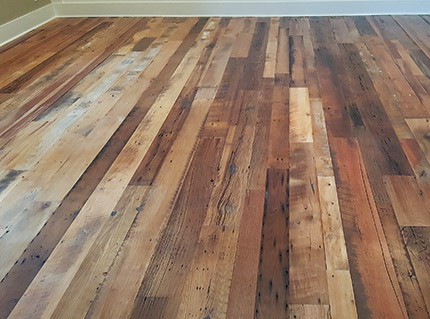
Salvaged wood floors
There are wood floor manufacturers that are salvaging shipping crates that are made out of tropical hardwood and are repurposing them in durable floors. Even though tropical hardwoods are on the top of the Janca rating scale, their harvesting can cause environmental destruction. If you are interested in purchasing tropical hardwood, make sure that they are FSC certified.
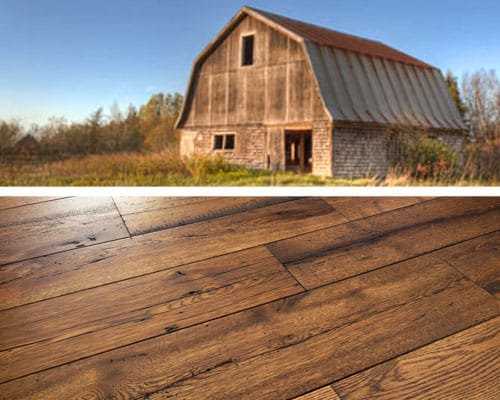
Bamboo
As mentioned before, bamboo flooring is another sustainable option. It has similar characteristics to the hardwood. It is easy to install and maintain, and it is durable. Because of its various grains and a vast range of colors, its production can offer a high level of customization.

Other types of floor materials
Linoleum Floors
Usually, when people think of linoleum floors, they are a mix with vinyl, although these two have nothing in common. Linoleum is created of natural materials, such as cork dust, linseed oil, wood flour, tree resins, and more. Where the vinyl is made synthetically by using chlorinated petrochemicals.
Linoleum was replaced by vinyl in the 1940s, but when people started thinking in creating sustainable kitchen floors it reemerged with a wide range of colors, patterns using tiles, planks or sheets, etc.
It has a long-life cycle- some of the manufacturers are offering up to 25 years warranties. Similar to cork it’s water-resistant and fire retardant.
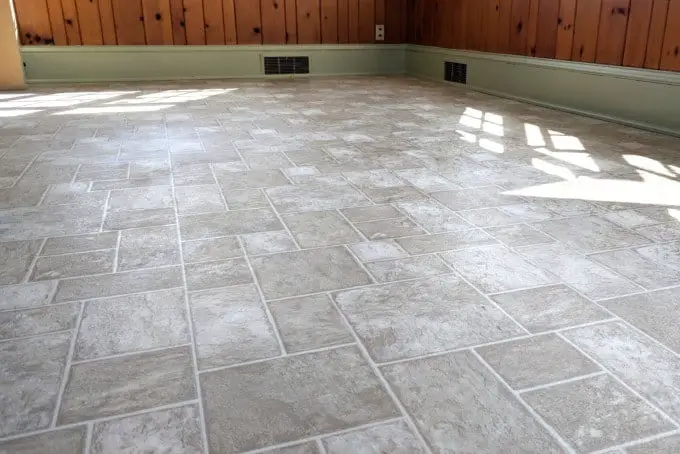
Cork floors
Using cork for flooring is a relatively new option and its pretty good material for floors. Every few years cork by stripping the bark of the cork oak tree into long slabs while taking care of not damaging the tree.
The trees are not cut down to use its bark. The bark grows back in a few years which makes it a renewable resource. Every bit that is harvested from the bark, is then used.
Cork flooring has antimicrobial properties which reduce the number of allergens, poses as a natural repellent for insects, it’s fire retardant, and it’s easy to maintain. Like any wood, cork can be finished using different paints and topcoats. It is available in both planks and tiles. Depending on the quality of the cork, the cork floor can last 10 to 30 years
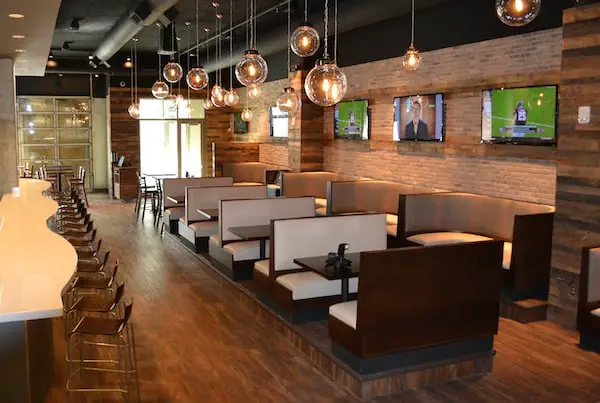
Hybrid of cork and rubber
Cork being a wooden product that is fast renewable can be mixed with recycled rubber for even bigger comfort on the feet. This hybrid is available in tiles and roles and it comes in several colors.
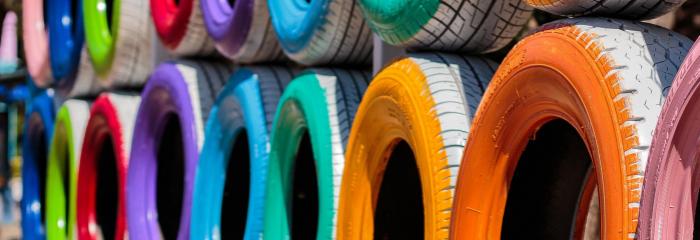
Glass Tiles
Glass tiles are a great option not only for the floors but for the kitchen walls as well. Glass tiles are made out of recycled wine bottles and beer bottles. Glass has similar characteristics as the other eco-friendly materials. It’s non-absorptive, easy to maintain, won’t stain and in damp environment won’t appear mildew or mold.
Glass tiles are also reflecting the light rather than absorbing it as the ceramic tiles. This gives an additional natural light in the room. Glass tiles come in numerous patterns, colors, and finishes.
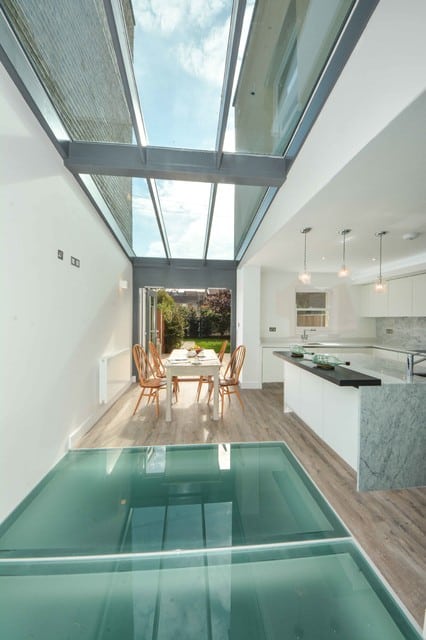
Sustainable Wall Paint
Sustainable paints are made out of natural, bio-based, or recycled materials. Even though the majority of the paint manufacturers don’t put ingredients label on the paint cans, some of them start to reveal information regarding their formulas as part of their corporate social responsibility.
Eco paints should be non-toxic, completely biodegradable, without any odors and anti-microbial. This means that they should be % VOC free (volatile organic compounds) and without added chemicals.
Sustainable paints take longer to dry. When choosing a paint for the office pantry take into account how eco-friendly is the paint, its durability and how well it will perform.
Two recommendations i would make are:
1. Kelly Moore eCoat Interior Paint
2. Benjamin Moore Natura Waterborne Interior Paint
Lighting
Make sure that the pantry area has enough lightning, whether natural light or artificial lights, to create a relaxing atmosphere. It would be best if the break area has large windows for natural light, but if that can’t be the case installing energy-efficient lights can help.
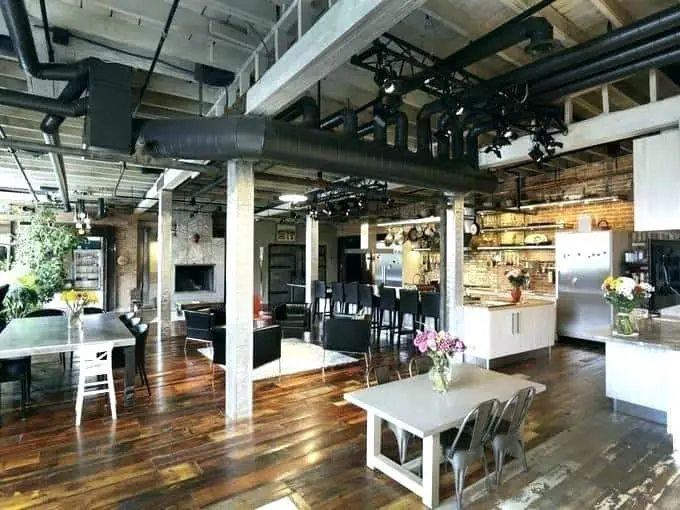
LED lights are a great eco-friendly option. LED lights are far more efficient than traditional lighting options like incandescent and fluorescent lights. Why is this?
LEDs are converting 95% of the energy into light, and only 5% of the energy is wasted as heat, whereas fluorescent lights are converting 95% of the energy to heat, and only 5% of the energy to light. (Consumer Report recommended buy Feit LED BR30 ).
).
LEDs are drawing a lot less power than traditional lighting options. For example, 36 watts LED is replacing 84-watt fluorescent while providing the same level of light. This means that less energy use is reducing the energy demand from power plants.
There are additional benefits of using LED light:
– These lights do not contain toxic elements and are recyclable. On the other side, most of the offices use fluorescent light that contains toxic chemicals like mercury. Also, the latter will most likely contaminate the environment when being thrown in the waste.
– LEDs have a better distribution of light, which means that fewer LED lights are needed in order to have the same brightness as with the traditional lights. Fewer lights mean reduced energy consumption.
– Life cycle – LED lights to have a longer life span and can last up to 6 times longer than the traditional lights.
Energy-Efficient Appliances
When buying energy-efficient appliances, you should choose appliances that have a certification logo from the US Energy Star, Japan’s Top Runner program, or the EU Energy Label. Appliances that are certified by one of these agencies are up to 90% more efficient than the ones without the certification.
By using energy-efficient equipment, the demand for electricity from the power plant is reduced significantly.
Energy Star logo is the symbol of energy efficiency. This logo can be found on different types of appliances. For each equipment the minimum standards for acquiring Energy Star are different.
Refrigerators
New refrigerators are offering up to 50% of energy and cost savings. Reduced energy consumption is enabled thanks to the advanced commutated motor fans, better insulation, new circuit design that improves the air movement, new coolants, heavy-duty askets that prevent heat getting in through the door, self-closing doors, cold rooms and cabinets powered from one system, hydrocarbon refrigerant, and more.
Larger refrigerators, generally, have bigger energy consumption. According to Energy Star, the ones that are 16-20 cubic feet are the most energy-efficient models.
Some of the brands that earned Energy Star are Veko, Arctic King, Electrolux, Haier, Frigidaire, LG, GE, Samsung, Kenmore, Viking, Whirlpool, and more. (Check out current pricing for Energy Efficient Refrigerators on ABestKitchen ). The number 1 recommneded refrigerator by Consumer Reports is LG
). The number 1 recommneded refrigerator by Consumer Reports is LG  LDCS24223S
LDCS24223S )
)
In order to increase the energy-efficiency of your refrigerator here are some tips:
– Place the refrigerator away from the dishwasher and cooker, because it will need to put additional energy for maintaining the indoor temperature;
– Make sure that there is enough space for ventilation, as well as employees, don’t block the ventilation panels inadvertently;
– Install door closers in case employees leave the door open;
– Adjust the temperature according to the season;
– Don’t put hot food in the refrigerator.
Dishwashers
Dishwashers are a must in the office kitchen. New generation dishwashers have a lot of features that are energy-efficient, have better water consumption, and better overall performance. A dishwasher that is Energy Star certified during its lifetime will save up to 3.870 gallons of water.
Make sure to purchase a model that has a condenser device for heat recovery so it can reuse the hot water that is going to waste to heat the water for the following washing cycle. (Check out the latest Energy Star Commercial Dishwashers on ABestKitchen). The number 1 recommended Energy Star Dishwasher by Consumer Reports is Bosch Ascenta )
)
Some of the features that help a new generation of dishwashers to be considered as sustainable appliances:
– Improved wash and rinse pumps, as well as an improved water filtration system that is removing the food waste from the wash water. This helps in efficient detergent use and water use throughout the wash cycle.
– Sensors that adjust the wash cycle depending on how much the dishes are dirty in order to clean the dishes with minimum use of water and energy.
– The size of the wash tanks is reduced.
Microwave ovens
Having a microwave oven is just as important as having a coffee machine. Most employees are preparing their home meals from the day before, so when the lunch hour comes, the food is cold and not very pleasant to eat.
Microwave ovens are using up to 90% less energy than conventional ovens. They are ideal for office use since they don’t require to preheat or warm-up period. (Consumer Report recommended Microwave is Panasonic SD7755 )
)
Having a microwave oven that is certified under LEED or some other standard is the best solution.
Sustainable Cutlery
In order to reduce the waste from disposable crockery such as plastic cups, plates, and spoons, make sure that the pantry is well equipped with the proper reusable dishware – plates, bowls, mugs, silverware, etc. Of course, everybody should be responsible and clean out their dishes after use, otherwise, the kitchen can become a messy area very quickly.
When using dishwashing soaps, making sure the soaps are non-toxic, biodegradable, and petroleum-free is another way of sustainably operating the office pantry.
Wooden Utensils
Wooden utensils work great on all surfaces, and unlike their counterparts (plastic, silicone, metal) are safe with all types of food. Also, these utensils have less impact on the environment.
Bamboo as said many times before in this article is one of the eco-friendliest products (along with other woods, such as beech and maple). Its antimicrobial characteristics do not allow bacteria to stick around.
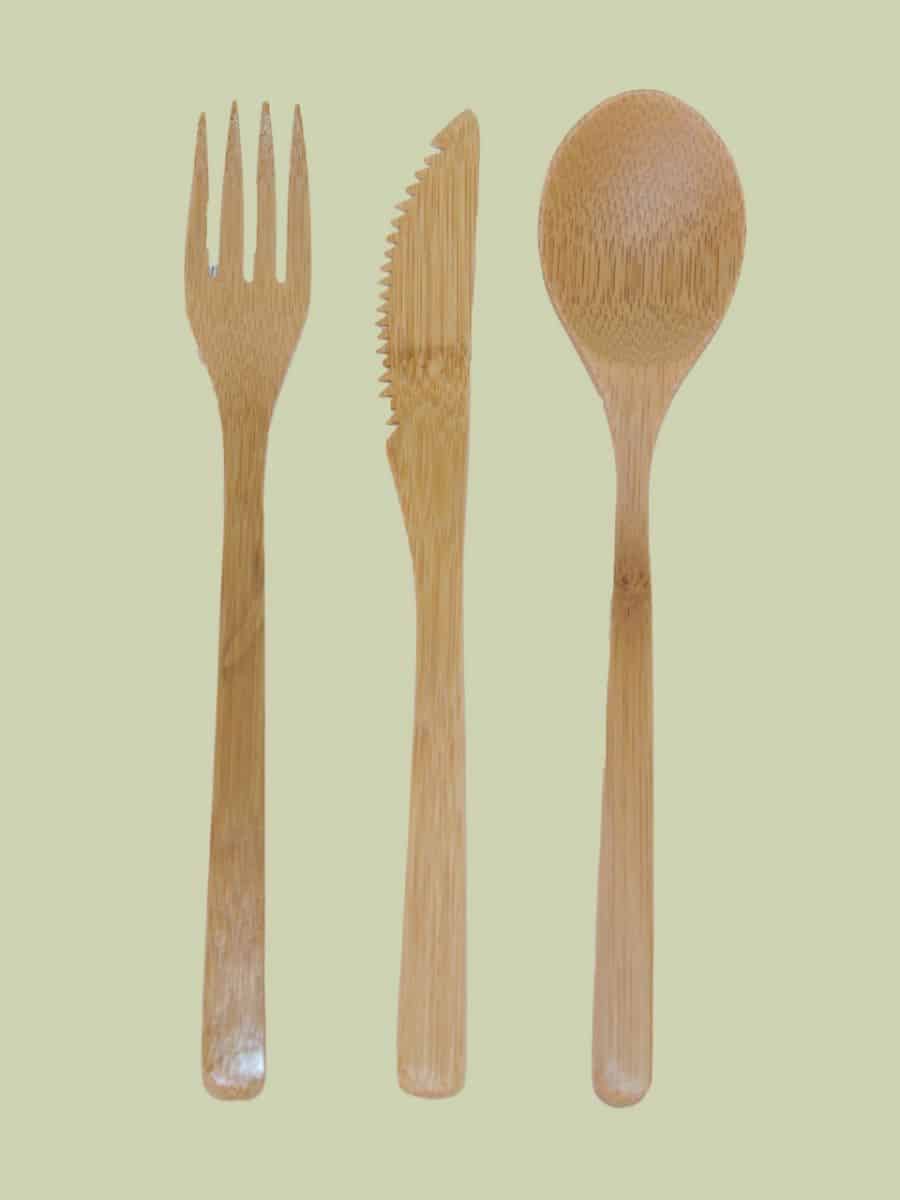
As an addition to their sustainability, bamboo utensils are compostable and biodegradable.
Even though these utensils have a lot of positive characteristics, sometimes their finish can be made out of toxic chemicals, so you need to be aware of that.
Also, wooden utensils whether bamboo or other wood, have a fragile nature, so there is a chance of splinters in the food and increased waste. (Here are two recommended options Disposable and Flatware
and Flatware )
)
Natural Cutlery is made out of a renewable, sustainable resource called “rest-wood” in Asia. In its production process, there are no chemicals or harmful materials used, which makes this type of cutlery totally compostable and 100% eco-friendly.
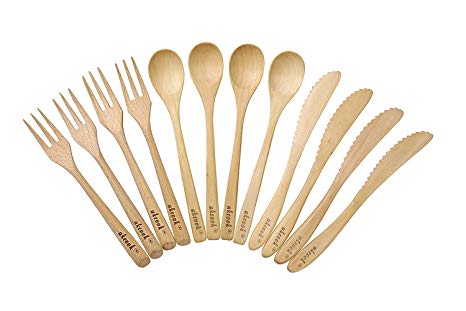
One of its perks is that is biodegradable. This means that it will dissolve within 49 days after it is thrown in the trash for composting. So, another perk is adding nutrition to the soil after its dissolving in the compost. (Here are two recommended options – Disposable and Flatware Set
and Flatware Set ).
).
Leafware cutlery is made out of sustainable and natural birch wood. These utensils are durable and heat resistant, contain no glazes, glues or dyes. Also, they are approved by the FDA.
PLA plastic
PLA plastic or polylactic acid is an eco-friendly plastic that is made from different types of renewable sources, like corn, potatoes, sugarcane, wheat, starch, etc. They can be used for hot food.
Even though this type of cutlery is biodegradable, its composting needs to be done in certain facilities and under specific conditions and not in nature. If the PLA plastic is derived from corn, it is very likely that it is coming from GMOs. The main advantage is that the composting process does not release harmful fumes.
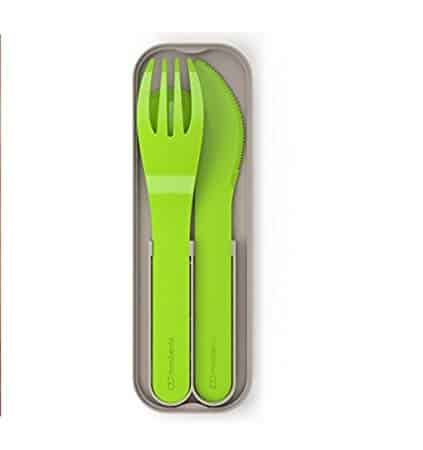
Make sure to buy PLA plastics only with the logo of the Biodegradable Products Institute. This way you will be sure that the brand you are using has gone through various tests for composability.
Another important thing to mention is that these plastics look a lot like regular plastics, so it is very easy to get confused and throw them in the regular garbage and not the one that needs to be sent to composting facilities. (Here are two recommended options – Disposable and Flatware Set
and Flatware Set ).
).
Sugarcane (Bagasse)
Sugarcane cutlery is made out of sugar cane fibers. This is also a very sustainable option since it doesn’t involve trees in their production. This cutlery is resistant to heat and a great alternative to paper cups and dishes.
One of its perks is that is completely degradable and will compost within 60-90 days.
Reusable silverware
Reusable silverware is also a great way of reducing paper and plastic waste during company lunches and meetings.
Sustainable Waste Management
The whole waste management process needs to start with gathering information on types and quantity of trash your office kitchen makes. This will help you in implementing the best waste management practices. It will surely show you in which areas you are spending too much energy.
– Reduce using paper towels – Try using towels that are washable instead of paper towels to reduce the paper waste. If you do use paper napkins and towels, make sure they are made from recycled content.
instead of paper towels to reduce the paper waste. If you do use paper napkins and towels, make sure they are made from recycled content.
– Replace the plastic cups either with disposable cups that can be recycled or coffee mugs
or coffee mugs and water glass bottles
and water glass bottles .
.
– Do not throw leftover food from the company’s parties. This food can be donated to shelters or food banks. It will benefit a lot of people in need and at the same time, the company can create a positive public image.
– If you can’t avoid waste – recycle. Recycle process keeps different types of material out in landfills, saves energy and is creating new materials that can be repurposed. Every kitchen needs to have different bins for paper, glass, and plastic. This way all of the employees will be encouraged to sort out their trash.
– Composting in an office is very easy with the use of tight-sealing compost bins which prevent unpleasant odors and fruit flies around the bin. As an addition, use compostable bags so the waste can be easily transported to a compost site. You can put this bin in the cafeteria or break room. You can even encourage employees to use the compost pile for nutrition the coil of the community garden.
so the waste can be easily transported to a compost site. You can put this bin in the cafeteria or break room. You can even encourage employees to use the compost pile for nutrition the coil of the community garden.
All of this is not possible if your employees are not on board with the plan.
What Should You Do To Create A Green And Sustainable Pantry?
When you are pursuing building a sustainable office, stocking the pantry with sustainable ingredients and thinking about their impact on the environment is a great way to start. There are a few ways in creating a green and sustainable pantry, such as:
Reduce food waste by buying what you need
Encourage your employees to plan upfront their meals, write their ingredients needs in the inventory for the next grocery shopping, so you don’t make purchases of unnecessary food as well as use the supplies that are already in the pantry. Usually, almost a third of our food goes into the garbage bin. With proper meal planning, there can be a significant reduction of food waste and money-saving.
Having a pantry really simplifies the purchasing process. You can easily see what is almost used and what is not. Overstuffing the pantry shelves with food your employees will never need can be avoided. After all, sustainability is about conscious consumption.
Bulk shopping whenever it is possible / Reduce package waste
Well-managed pantry is having opportunities for making bulk shopping. By buying sugar, coffee, tea, creamer, and more in bulk packaging or as unpacked goods, your office can reduce the waste in packaging material. Having a well-stocked pantry means that employees will buy fewer ready meals, takeaways, etc, which will also reduce packaging waste. This brings opportunities for reusing or recycling the packages and plastics you have to use. All of this will bring your workplace community into having a zero-waste culture and a plastic-free environment.
Of course, when buying in bulk, you need to take precautions in case some of the employees have different types of allergies.
Use Reusable Storage Containers
Buy reusable food containers from glass or metal that will replace all of the single-use and disposable food containers and distribute them among the employees. This way employees can store their food in these storage containers and be aware when some food has expired and gone bad. Every jar or container should have its owner’s name, as well as labeling the containers that are for shared use, such as tea, coffee, cookies, etc.
Glass containers are providing safer storage for the food, then can be stored anything from nuts, seeds to soups and stews, and are very easy to clean.
How to Operate Your Sustainable Corporate Pantry?
When the number of employees using the same pantry is pretty big, the office pantry can turn into a messy area pretty quickly. There can be different types of items and half-empty bags that can attract pests. There are few operating tips that can help you in making the corporate pantry a better place for all of the employees.
Keep the pantry neatly arranged
Depending on the space designated for a pantry, and the number of available shelves it is better if the containers are aligned in single rows. Otherwise, it will be difficult to sustainably operate the corporate pantry, as there is the risk of some of the foods being forgotten in the back of the shelves and turn out bad.
A neatly organized pantry will immediately show which of the ingredients are in low quantity and if they need to be replaced.
When everyone has their jars or containers ready, you should either let the employees place their containers on the shelves, so they easily know the location of their food or designate the space on the shelves according to teams/departments, etc., so there are no misunderstandings regarding the location of the employees’ containers.
Also, there should be designated space or shelves for food, coffee, tea separately, as well as shelves for cups, plates, utensils, and more. All of this will help in having one neat and organized pantry, no matter the number of people using it. Of course, creating a culture with proper office and kitchen/pantry etiquette will contribute additionally to using the space wisely.
Label the containers for shared use
Food containers that are meant for shared use preferably need to be labeled so everyone knows what is in the container without having to guess which can cause additional stress and lose their time.
Make sure to have a quality and durable labeler near the pantry, so the employees can as well label their food containers, not just the ones for mutual use. Even though labels can also cause waste, with the use of more durable ones, ideally its use will be not that often.
Keep an inventory list
Keeping an inventory might seem like a complicated thing to do that requires a certain amount of effort. Actually, having an inventory will make stock-keeping management a lot easier.
It’s effective and cost and time saving since it will offer information on which food will run out, which one will soon expire, etc. But the maintaining of the inventory list needs to be consistent in order to be successful. Depending on the number of employees using the pantry, the list needs to be updated at least once a week or a couple of times.
Write the expiration dates
Noting the expiration dates is one of the most important aspects of sustainably managing the pantry. After all, you don’t want to throw certain food because it went bad. Writing the expiration dates on the containers or on the inventory list will show you immediately which ingredients need to be used up as soon as possible.
Sustainable And Green Foods That Need To Find Their Place In A Corporate Pantry
Sustainable and green pantry is a mix of healthy ingredients. And stocking the pantry is really a challenge, especially stocking up a corporate pantry with sustainable, green and ethical ingredients. Here come numerous questions such as, how do you know which products are not damaging the environment? What is the meaning of the different types of food labels- from gluten-free, fat-free, non-GMO, to all-natural? Which product brands are organic? What are the practices behind all the labels?
Supermarkets are offering great options, Whole Foods, Trader Joes for example, with new ones becoming available all the time. Stocking up a sustainable pantry requires proper research and learning the preferences of your employees.
Labels
Start with the most important step, stock up the pantry with local (regional), seasonal and organic food. Sustainable and green pantry means that your products need to be less harmful to the environment and planet.
Local (regional) produce – This means that the further away the fruits and veggies are grown the more CO2 emissions are released in the air during their transportation. If the produce is grown locally, it has less impact on the environment since it is causing less amount of CO2 emissions. Make sure to purchase your fruits and veggies from a local farmers market, or direct delivery from a local farmer .
.
Seasonal produce – Fruits and veggies are available throughout the year no matter their season, but why is it important to buy them when it’s their season? Seasonal produce when it’s their natural growing period, grow by themselves without the use of chemicals or greenhouse to accelerate their growth. Fruits and vegetables that are available when it’s not their season rot faster.
Organic produce – Organic food means that the ingredients are untreated, clean, without the use of chemicals and supplements in their growth. Organic fruits and vegetables are tasting better and are better not just for you but for the environment as well. The pollution of the soil is reduced by not using pesticides or different chemicals.
Heirloom produce – This produce comes from a seed that has been passed down for generations in certain region and is hand-selected by the farmers. This produce is often natural-pollinated, which means these vegetables are pollinated by bees without the intervention of humans.
Wildcrafted produce – This means harvesting plants or ingredients from their natural habitat, such as honey, sea salt, and more.
Essential Pantry Products
Caffeine – Caffeine is the most important product in every office pantry since a lot of people can’t function without their daily caffeine intake. Make sure to purchase coffee beans or tea with great quality from companies that take care of the environment. Additionally, acquiring a coffee machine or kettle that is certified under one of the sustainability standards is essential. All of this will help employees to have coffee/tea whenever they need during working hours without going to a cafe or bringing coffee to go. (The coffee machine i recommend is Jura and the bean i use everyday is Bulletproof
and the bean i use everyday is Bulletproof )
)
Trying to use coffee beans instead of coffee pods will reduce waste. Another option for reducing waste is recycling the coffee/tea bags.
Snacks – For most people, snacks generally means candy bars and potato chips, but actually there are numerous healthy and inexpensive snacks. Having non-perishable, healthy snacks in the pantry will help to subside the hunger that arises during the working hours. Here are some examples:
- – Protein-filled snacks – celery, peanut butter, and raisins;
- – Fruits;
- – Oat biscuits;
- – Rice cakes with peanut butter, coconut, and dried cranberries;
- – Gluten-free pretzels with corn and rice;
- – Pomegranate Seeds;
- – Trail Mix;
- – Frozen grapes;
- – Dark chocolate;
- – Vegetable chips;
- – Different types of seeds and nuts, and dried fruit: cashews, peanuts, pistachios, almonds, walnuts, dried fruits-cranberries, raisins, apricots, and more.
As an addition having a designated area in the kitchen for preparing healthy snacks, such as a counter for chopping vegetables or fruits is considered a huge plus. This way the employees won’t feel the need to buy highly processed foods and snacks that won’t have some nutritional benefits in helping them focus and concentrate.
Well-stocked refrigerator – the refrigerator needs to have supplies of fresh foods, chilled juices, milk, and more. Also adding water cooler is a great addition.
Other essential items in the pantry are salt, sugar, extra virgin olive oil, non-GMO and organic peanut butter, different flavors of spices, Dijon mustard, canned seafood that is sustainably caught, balsamic vinegar.
All of these items can be purchased from sustainable brands and farmers who are having a production process with zero-waste, and packaging that is environmentally-friendly.
What Is Composting, Zero-Waste and Recycling?
Composting is a process of biodegradation of organic waste. It’s a recycling process done by nature. There is a high percentage of waste in the homes and offices that can be composted.
Zero waste is waste management focused on reusing all of the products, so there is no waste sent to landfills, and ultimately to the oceans. Hosting Zero-waste events can help in raising the awareness of the employees to reduce waste.
Recycling is a process of making new materials by converting waste materials. The company can participate in pilot programs for recycling. The employees can learn which products can be recycled.
How to have a sustainable company party
The company’s parties can produce an enormous amount of plastic and paper waste. Reduce this amount of waste by using compostable plates, bowls, and cups that are environmentally friendly. This cutlery can come in different sizes.
that are environmentally friendly. This cutlery can come in different sizes.
Even though using ceramic plates would be ideal, a lot of offices can afford to buy a large number of ceramic plates.
What can and can’t be composted
What can be composted – food scraps such as tea bags, fruits, coffee grounds, bread, grains, vegetables, eggshells, pasta, rice, coffee filters. Then food-soiled paper such as paper towels, bags, greasy pizza boxes, napkins, etc.
What can’t be composted – chicken, meat, fish, dairy products, oil or fat. Then peach peels, banana peels, orange peels because it may contain pesticides.
What are the benefits of having a corporate pantry?
– Employees are happier because they will eat a lot of healthier foods, and will have better self-esteem;
– Employees will feel valued and be more productive;
– Positive office culture,
– Commonplace for gathering, relaxed conversations, and sharing ideas.
Join the Open Sourced Workplace Community



